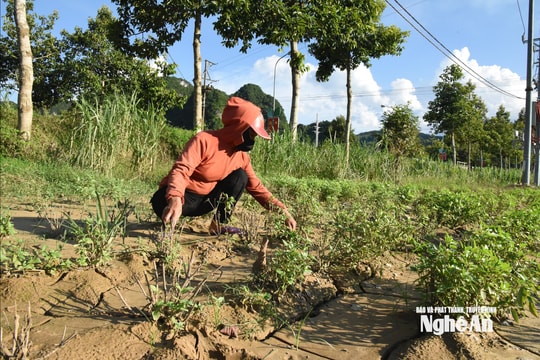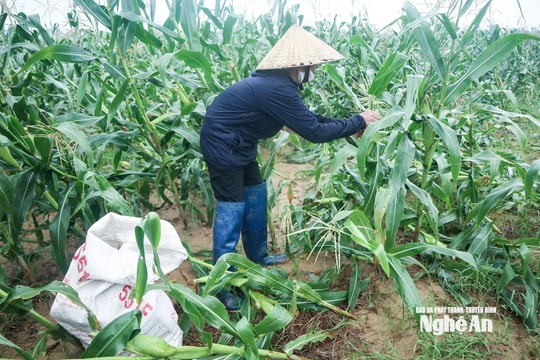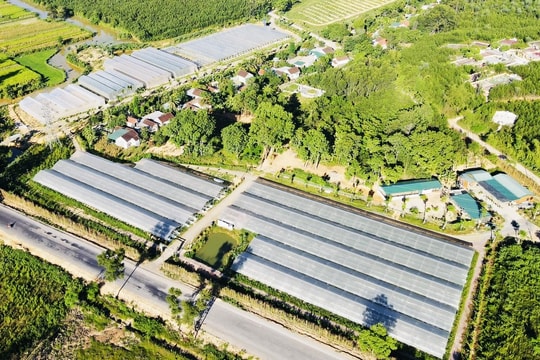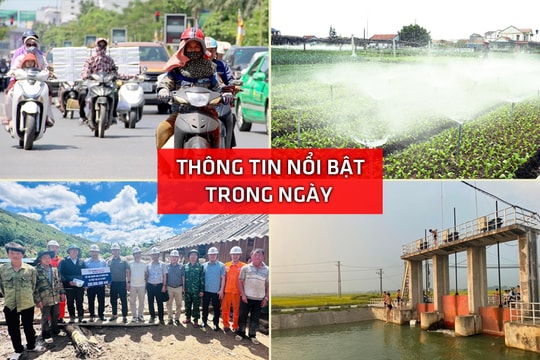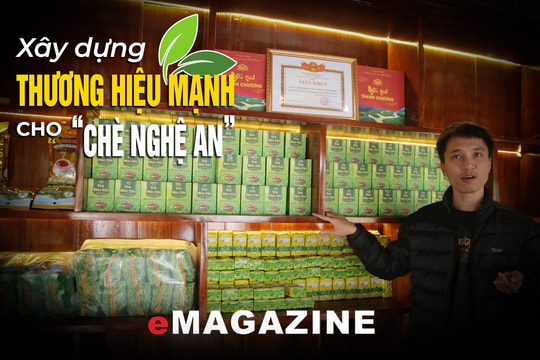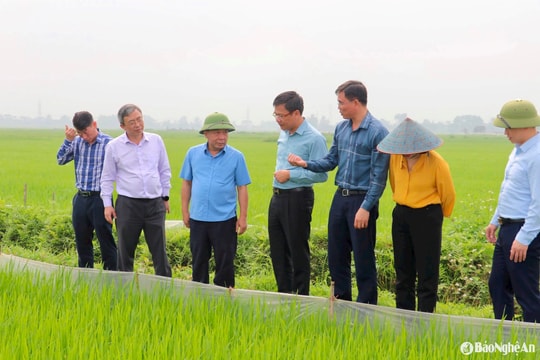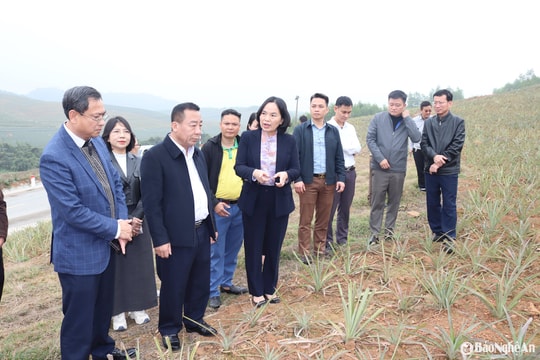The risks of environmental pollution from agricultural production
(Baonghean.vn) - Agricultural production has been and is having many impacts that increase environmental pollution, especially water pollution. This is a hot issue in most localities in the province and is a concern for everyone in today's life.
Pollution from fertilizers, pesticides and livestock waste
On average, each year Nghe An cultivates over 380 thousand hectares of various crops, of which 176-180 thousand hectares of rice, 52-53 thousand hectares of corn, 2.1-2.2 thousand hectares of cassava, 24-26 thousand hectares of sugarcane, 5.3 thousand hectares of oranges, 2.6-2.8 thousand hectares of sweet potatoes, 120 thousand hectares of various vegetables and fruits, not to mention forestry and medicinal plants. All of the above crops use a lot of inorganic fertilizers and chemical pesticides.
Preliminary statistics show that, on average, each year the whole province uses 500-700 tons of pesticides, golden apple snail killers, herbicides, commonly known as plant protection drugs (PPE). After use, there are still no less than 60-70 tons of bottles and packaging left in the fields, most of which are discarded in the fields and ditches...
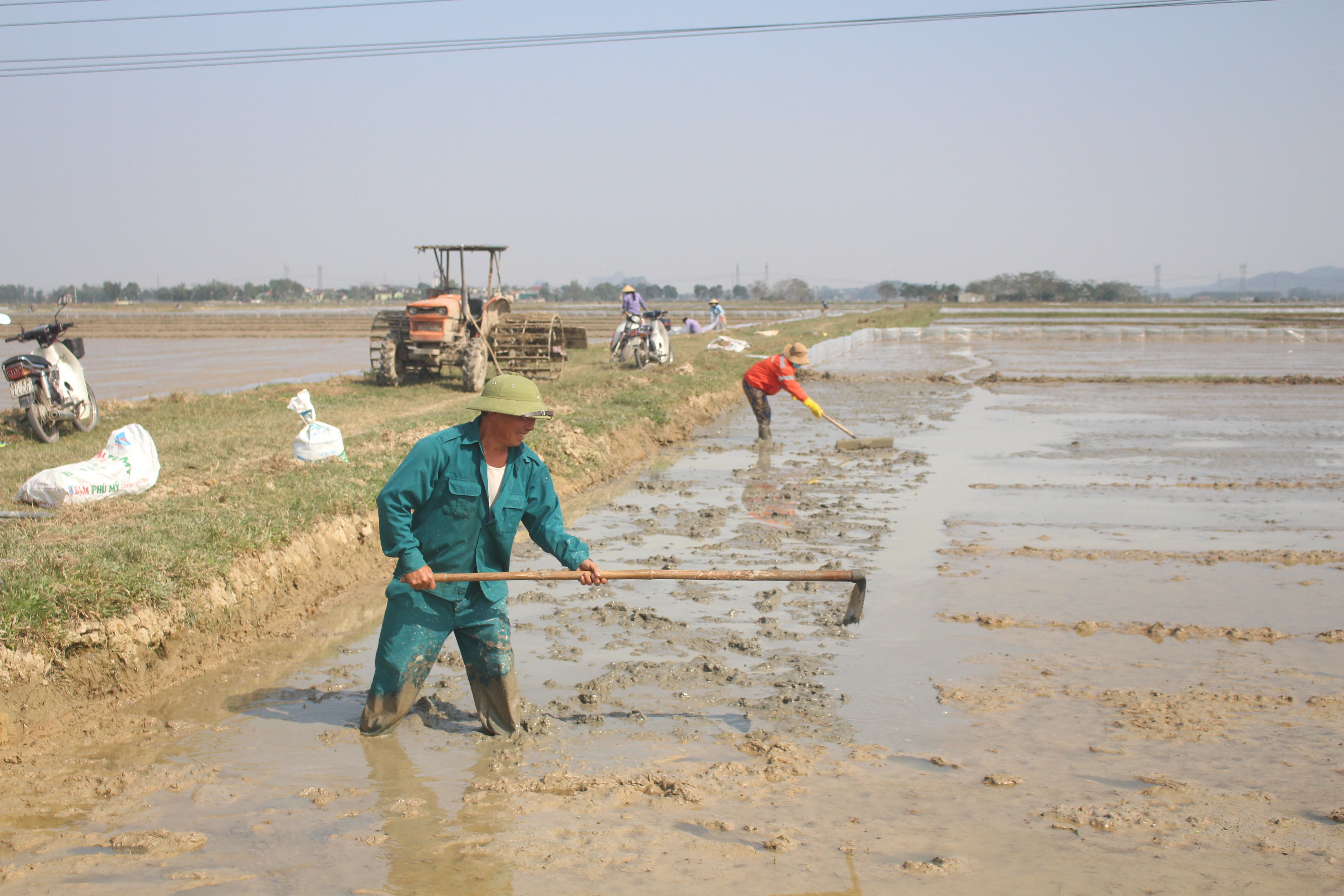 |
| Plant protection drugs were used right from the beginning of the production season. Photo: Phu Huong |
Along with the use of pesticides, the whole province has used a large amount of inorganic fertilizers of all kinds every year. On average, each year, 58,000 - 60,000 tons of urea, 98,000 - 100,000 tons of phosphate, 43,000 - 45,000 tons of potassium and 57 - 60,000 tons of NPK mixed fertilizers of all kinds are used. Of the total amount of inorganic fertilizers mentioned above, plants only absorb a maximum of 50% depending on the type. The remaining amount of inorganic fertilizer that is not fully absorbed by plants will remain in the soil in large quantities, not to mention the amount of fertilizer used in excess of the plants' needs, increasing the risk of disease and therefore requiring the use of pesticides. In addition, the excessive use of inorganic fertilizers will reduce the quality of agricultural products, cause soil degradation, pollute water sources and increase greenhouse gas emissions, which have a negative impact on the environment.
 |
Dien Chau farmers collect plant protection waste in the fields. Photo: Phu Huong |
Inorganic fertilizers are applied to the soil to nourish plants, pesticides are sprayed on the leaves and stems of plants to kill pests, sprayed on the soil to kill weeds, golden apple snails, fungi... in short, everything is poured into the soil, into the water, into the air, of which, except for the part taken by the plants (mainly inorganic fertilizers, about 31 - 50%), the rest is dissolved in water, remaining in the soil and it moves freely with the water flow, especially when there is heavy rain, water flows from the fields to canals, rivers and streams... The part remaining in the soil is absorbed by the underground water, moving everywhere and finally flows into rivers and streams, and from rivers and streams, water is used to irrigate crops, used for daily needs and human life.
In addition to inorganic fertilizers and pesticides, waste from livestock farming also causes major pollution to the water, soil and air environment. The whole province currently has 776,000 buffaloes and cows, approximately 1 million pigs and over 22 million poultry of all kinds. Preliminary calculations of the amount of solid waste generated during the livestock farming process, including solid manure, leftover food, and bedding, are estimated at about 1.6 - 1.8 million tons/year. In addition, there are no less than 2 million m3/year of wastewater from buffaloes, cows, pigs and water from cleaning barns. All untreated waste from livestock farming when discharged into the environment pollutes surface water, groundwater, soil and air, seriously affecting human health.
 |
| Waste from livestock farming also causes major pollution to the water, soil and air environment. Photo: Thu Huyen |
Especially in areas where livestock and poultry are affected by epidemics, there are often many types of pathogenic microorganisms such as E.coli, salmonella causing diarrhea, intestinal diseases, worms, viruses causing blue ear disease in pigs, African swine fever... all of which will greatly affect public health and cause disease outbreaks in livestock.
In aquaculture alone, environmental pollution is unavoidable, mainly due to excess organic waste from food, feces, other waste and the use of chemicals and antibiotics in the process of raising shrimp and fish.
Restrictive measures are needed.
Agricultural production cannot avoid the use of fertilizers, pesticides... and of course it is very difficult to avoid the pollution of water, soil and air. But that does not mean we do not have plans and measures to prevent or at least minimize the above situation. In the immediate future, we need to focus on implementing the following measures:
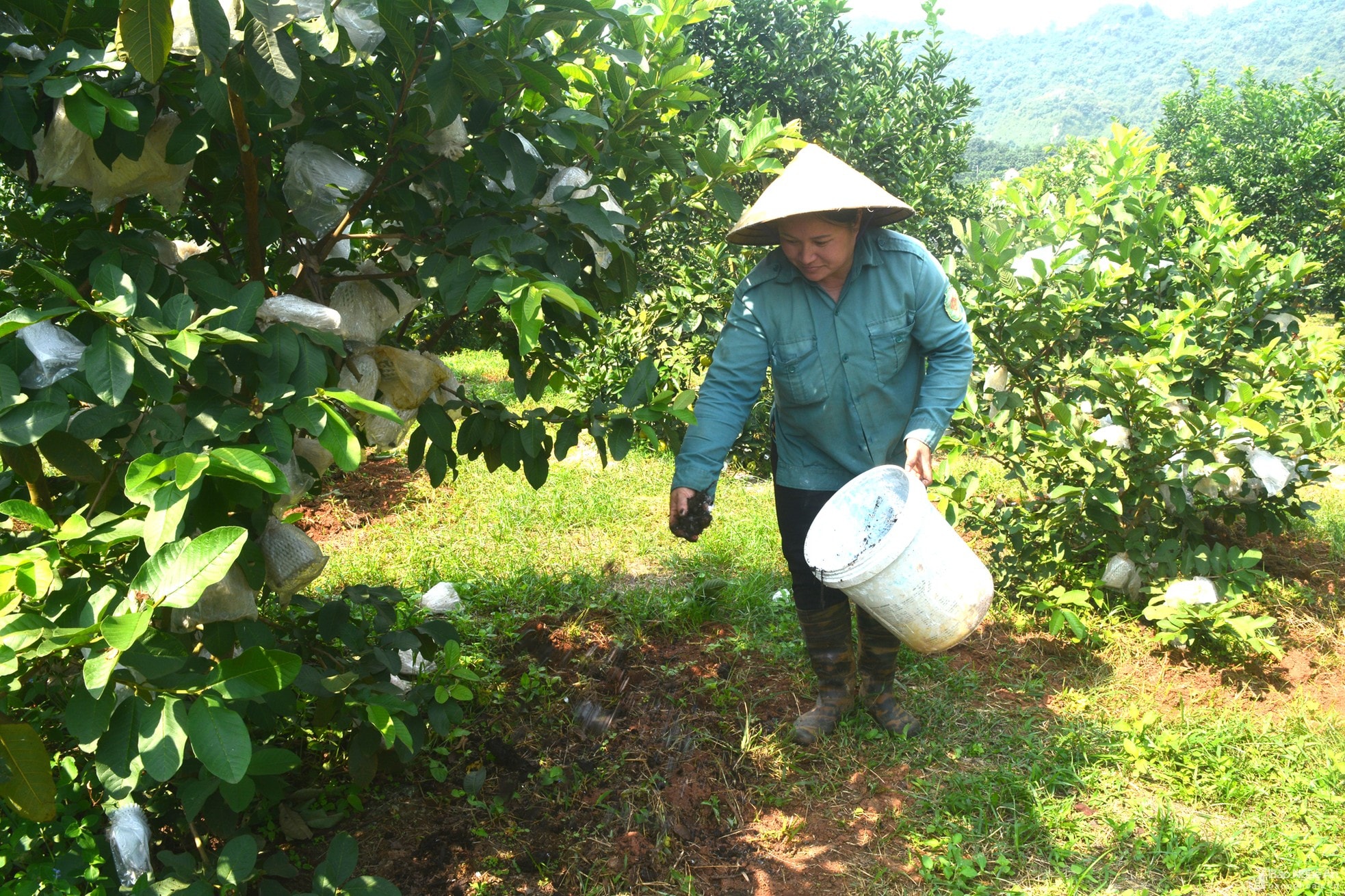 |
| Tan Phu (Tan Ky) farmers use organic fertilizer to fertilize fruit trees instead of nitrogen, phosphorus, and potassium. Photo: Thanh Phuc |
The first:Do not use chemical fertilizers indiscriminately, fertilize properly, fertilize enough, and fertilize when the plants need it. Absolutely do not fertilize more than the plants need, especially nitrogen fertilizers of all kinds, which will cause the greatest environmental pollution.
Monday:All organic fertilizers from buffalo, cow, pig, chicken, duck farms... must be collected and composted into piles sprinkled with lime powder, then covered with mud (hot compost) for 13-15 days to both kill bacteria and viruses, decompose the fertilizer and greatly reduce toxic emissions from fertilizers. Absolutely do not use fresh, uncomposted manure to fertilize fields, it is not only bad but also pollutes the environment.
Tuesday:Implement the policy of "Building a green, clean and beautiful countryside" well with specific actions. Households and farm owners raising 3-4 buffaloes, cows and pigs or more need to have closed drainage ditches and sewers from the barn to the wastewater storage pit (if there is no bio-gas tank), the tank needs to be built high and have a tight lid so that when there is heavy rain causing flooding, the water does not flow out and pollute the environment. Wastewater is accumulated in the tank after a period of 20-25 days of settling and decomposing organic matter, farmers can dilute it with clean water to water the plants.
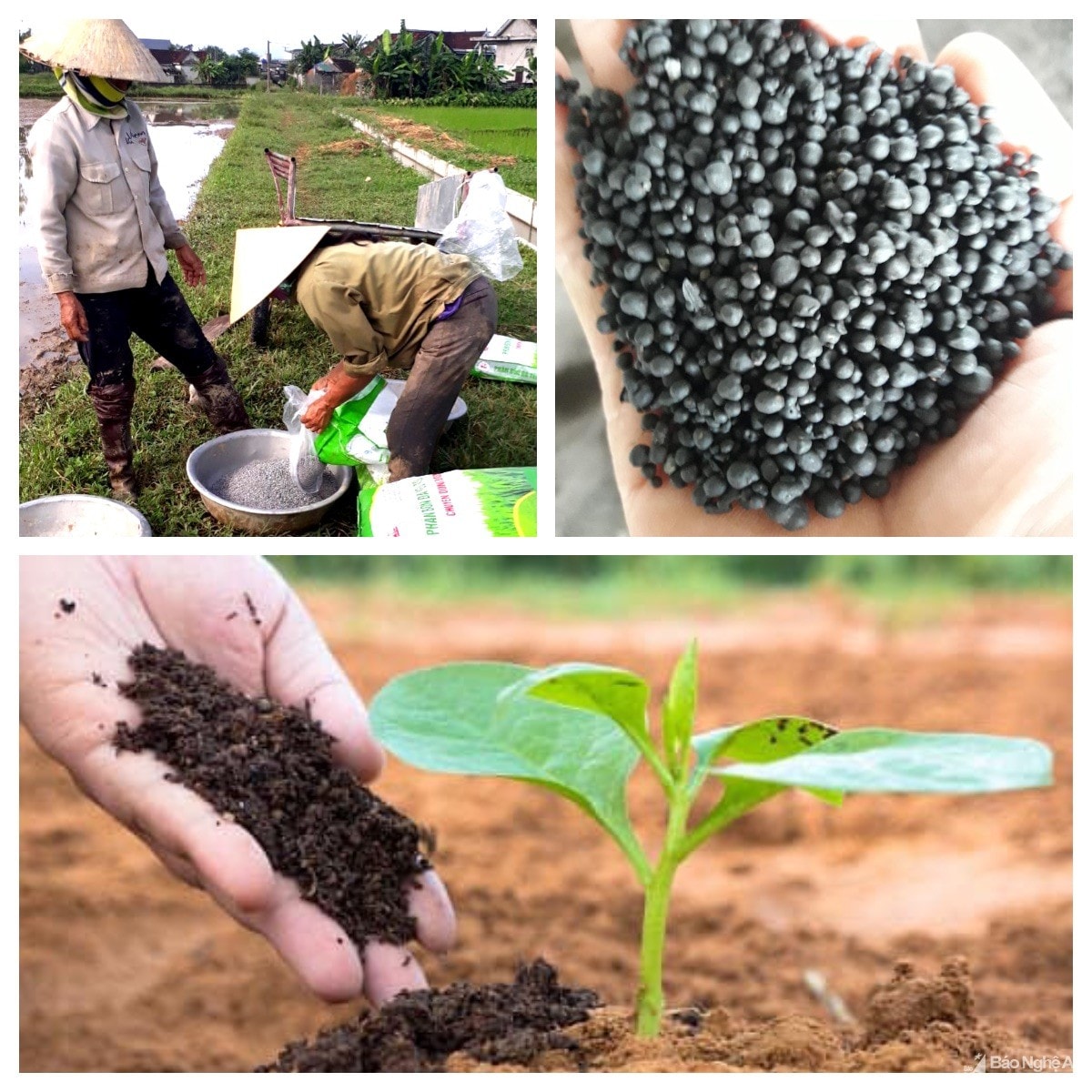 |
| Despite bringing "double" benefits, the use of organic fertilizers to replace inorganic fertilizers still faces many difficulties and has not been widely applied. Photo: Thanh Phuc |
Use pesticides "responsibly", only use pesticides when necessary, when finished using the pesticides, collect all packaging and bottles and dispose of them in designated areas of the village, hamlet, or hamlet... If there is a waste collection tank, put it there for disposal according to the instructions of the Plant Protection Department and the Department of Natural Resources and Environment.
Wednesday:Strengthening the propaganda and dissemination of legal documents and applying sanctions on agricultural and rural environmental protection to all people. Raising awareness of the role and responsibility of all levels and each person in protecting a green, clean and beautiful environment for the health of the whole community.
Thursday:According to the latest data from the Department of Agriculture and Rural Development, the province currently has 11,000 biogas tanks for treating fertilizers and 15,536 tanks for collecting pesticide waste. These numbers are very small compared to the needs. Therefore, it is recommended that the Provincial, District, Town People's Committees and relevant agencies annually allocate a necessary amount of funds to help communes, agricultural cooperatives and farmers build biogas tanks for treating livestock waste and tanks for collecting pesticide waste in the fields.

